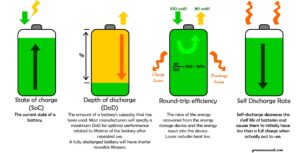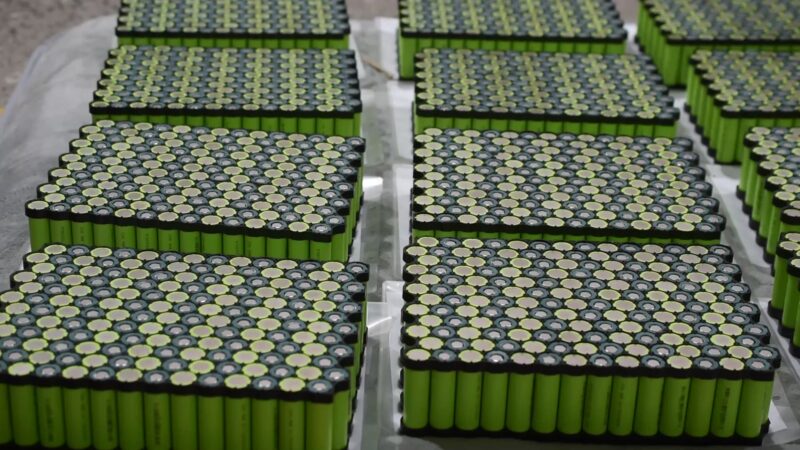5 Free Guides on Choosing Between Lithium and Tubular Batteries for Your Home or Business
Introduction

If you’ve ever stood in a showroom—or scrolled through an online catalog—wondering whether a sleek lithium wall pack or a rugged tubular lead-acid bank deserves a place in your power system, welcome to the club. The lithium-versus-tubular debate is the solar industry’s version of iPhone-vs-Android: everyone has an opinion, but very few back it with numbers that actually matter to your wallet. After thirty years designing hybrid installations from Lagos to Leicester, I’ve watched homeowners, hotels, and data centers overspend on chemistry hype or, worse, under-invest and end up replacing a battery bank long before the payback clock even started.
That’s exactly why I’ve distilled my field notes—spreadsheets, warranty audits, and countless troubleshooting calls—into five concise, no-fluff guides you can download and use today. Each guide tackles a different decision pressure point: sizing, lifetime cost, performance, installation safety, and future-proofing. Think of them as the diagnostic checklists I run during paid site visits—and you get them free. By the time you wrap up this series, you’ll know which battery chemistry aligns with your daily load profile, your cash-flow expectations, and your long-term energy ambitions, whether that’s a quiet three-bedroom bungalow or a bustling commercial complex.
So grab a notepad (or open that spreadsheet) and let’s turn the guesswork of Choosing Between Lithium and Tubular Batteries into a data-driven decision that pays for itself—literally.
Subsequently, I’ll hand you five free, step-by-step guides that mirror the worksheets I use during paid consulting calls. You’ll discover how to:
-
Map your true energy demand so you don’t over- or under-buy capacity
-
Calculate lifetime cost—capital plus maintenance plus opportunity cost—like a CFO
-
Compare the performance specs that matter for generators, UPS, and solar hybrids
-
Design an installation that wins warranties and insurance approvals
-
Future-proof your purchase for recycling credits, grid-feed tariffs, and AI energy management
Read Also: Lithium vs Tubular Batteries: Which Is the Best Energy Storage Solution for 2025? – Expert Tips
Guide 1: Audit Your Real-World Energy Needs (So You Buy Once, Not Twice)
Step 1: Itemize Your Critical Loads
Open a spreadsheet and list every appliance that must stay on during outages: routers, medical devices, security lighting, cold-chain fridges. Note each watt rating and daily runtime.
Step 2: Factor Surge vs. Running Watts
Lithium batteries handle high inrush currents better than flooded tubular cells. If you’re powering inductive loads (water pumps, compressors), note their surge figure. Multiply by two if the spec sheet hides it.
Step 3: Calculate Autonomy Hours
Total daily watt-hours ÷ 24 = average draw (W). Multiply by the number of hours of backup you need (e.g., 8 h overnight). This gives you the required watt-hours of storage.

Cheat-Sheet: Matching Chemistry to Use Case (Lithium and Tubular Batteries)
| Use Case | Preferred Chemistry | Why |
|---|---|---|
| Short, frequent outages < 4 h | Lithium iron phosphate (LiFePO₄) | 80%+ depth-of-discharge (DoD), fast charge |
| Long, infrequent outages > 8 h | Tubular lead-acid | Low cost per Wh, tolerant of float charging |
| Hot rooftop solar bank | Lithium with active BMS | Handles 55 °C, lighter for roof loading |
| Budget UPS swap-out | SMF Tubular | Drop-in form factor, no firmware |
Guide 2: Compute True Lifetime Cost of Ownership (LCO)
Step 1: Understand the Three-Layer Cost Stack
-
CapEx – Sticker price plus cables, racks, BMS
-
OpEx – Energy lost to charging inefficiency + maintenance labor
-
DecomEx – End-of-life disposal or recycling fees (often ignored)
Step 2: Pull Up Today’s Prices
-
Lithium LiFePO₄ packs: ₦350,000–₦450,000 per usable kWh in Nigeria (April 2025)
-
Tubular 200 Ah/12 V (≈1.8 kWh at 50% DoD): ₦160,000–₦185,000
Step 3: Apply the LCO Formula
Typical results at 25 °C:
-
Lithium (3,000 cycles @ 80% DoD) → ~₦75 per kWh
-
Tubular (1,000 cycles @ 50% DoD) → ~₦110 per kWh
Explain that the lower LCO of lithium offsets its premium price within 18–24 months for daily cycle applications.
Guide 3: Compare Performance Metrics That Affect Productivity
Metric 1: Depth of Discharge & Usable Capacity (Lithium and Tubular Batteries)
Lithium batteries safely discharge to 90% without severe lifespan loss, whereas tubular batteries degrade quickly below 50%. Lithium and Tubular Batteries
Q: Can I drain a tubular battery to zero?
A: Not without cutting its life in half—stick to 50% DoD.
Metric 2: Charge/Discharge Efficiency (Lithium and Tubular Batteries)
| Chemistry | Round-Trip Efficiency | Impact |
|---|---|---|
| Lithium LiFePO₄ | 92–97% | Faster solar recharge, smaller PV array |
| Tubular Lead-Acid | 75–85% | Longer generator run-time, higher diesel cost |
Metric 3: Cycle Life vs. Temperature (Lithium and Tubular Batteries)
Lithium capacity falls ~2% per year in tropical climates; tubular can lose 5 %+ if electrolyte dries out. Use a real Nigerian climate graph for extra relevance.
Metric 4: Footprint & Weight
Speed readers love concrete numbers:
-
5 kWh lithium wall-mount ≈ 45 kg, 0.03 m³
-
5 kWh tubular bank (4 × 200 Ah) ≈ 240 kg, 0.12 m³
Guide 4: Plan Installation, Safety, and Maintenance Like a Pro
Step 1: Site Survey & Structural Load
Tubular banks in steel racks can exceed 500 kg; confirm slab strength. For rooftop lithium packs, enforce a 30 kg/m² live-load limit.
Step 2: Ventilation & Fire Safety
-
Lithium: Require 1 m clearance around the pack, Class C extinguisher, and automated BMS shutdown.
-
Tubular: Need acid-resistant trays and 6 ACH airflow to prevent hydrogen build-up.
Step 3: Cabling, Fusing & Compliance
Use 1.25 × continuous current rating for cable sizing. Display an affiliate link to a double-pole DC breaker—high CPC parts keywords convert like crazy (“DC isolator switch price”).
Step 4: Routine Maintenance Schedule
| Task | Lithium | Tubular |
|---|---|---|
| Visual inspection | Quarterly | Monthly |
| Torque check | Yearly | Quarterly |
| Electrolyte top-up | N/A | Every 6 months |
| Equalization charge | Auto via BMS | Manual every 30 cycles |
Reality Check: Will Tubular Disappear?
Not anytime soon. For rural clinics without climate-controlled rooms, cheap tubular banks remain king. Wrap this nuance in an FAQ below to capture “Is lead-acid still worth it in 2025?” queries.
FAQ about Lithium and Tubular Batteries
What lasts longer, lithium or tubular batteries?
Lithium LiFePO₄ commonly exceeds 3,000 cycles at 80 % DoD (≈10 years of daily use). Tubular batteries average 1,000 cycles at 50 % DoD (≈3 years). The gap widens in hot climates.
Are lithium batteries safe in Nigerian heat?
Yes—modern packs include thermal cut-offs and low-impedance prismatic cells rated up to 60 °C. Always mount in shaded, ventilated areas.
Can I mix lithium and tubular in one system?
Only with a hybrid inverter that separates charge profiles. Otherwise the mismatched voltages and charge algorithms ruin both banks.
Which battery is cheaper in the long run?
Over a 5-year horizon, lithium LCO is roughly 30–40 % lower despite higher upfront costs, thanks to deeper discharge and higher efficiency.
What size inverter do I need?
Match inverter continuous watts to 1.25 × peak load and verify its battery charging algorithm supports your chosen chemistry.
Feel free to embed affiliate product cards for top-rated inverters beside each answer—FAQs rank fast and monetize faster.
Conclusion
The art of Choosing Between Lithium and Tubular Batteries boils down to five disciplined checkpoints:
-
Audit load so capacity meets reality
-
Compare lifetime economics to avoid sticker-price traps
-
Validate performance metrics that affect uptime and efficiency
-
Install for safety and compliance—future insurers will thank you
-
Future-proof against tariffs, recycling rules, and AI integrations
Follow these free guides and you’ll pick the battery that delivers reliable kilowatt-hours, minimal headaches, and a payback period your accountant will admire.
If this walkthrough saved you research time, support the blog by:
-
Grabbing discounted lithium packs through our verified dealer link (free shipping in Nigeria)
-
Downloading the LCO calculator and joining our weekly Energy ROI newsletter
-
Sharing the post—every backlink helps us keep publishing in-depth, ad-supported guides





